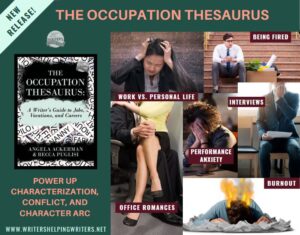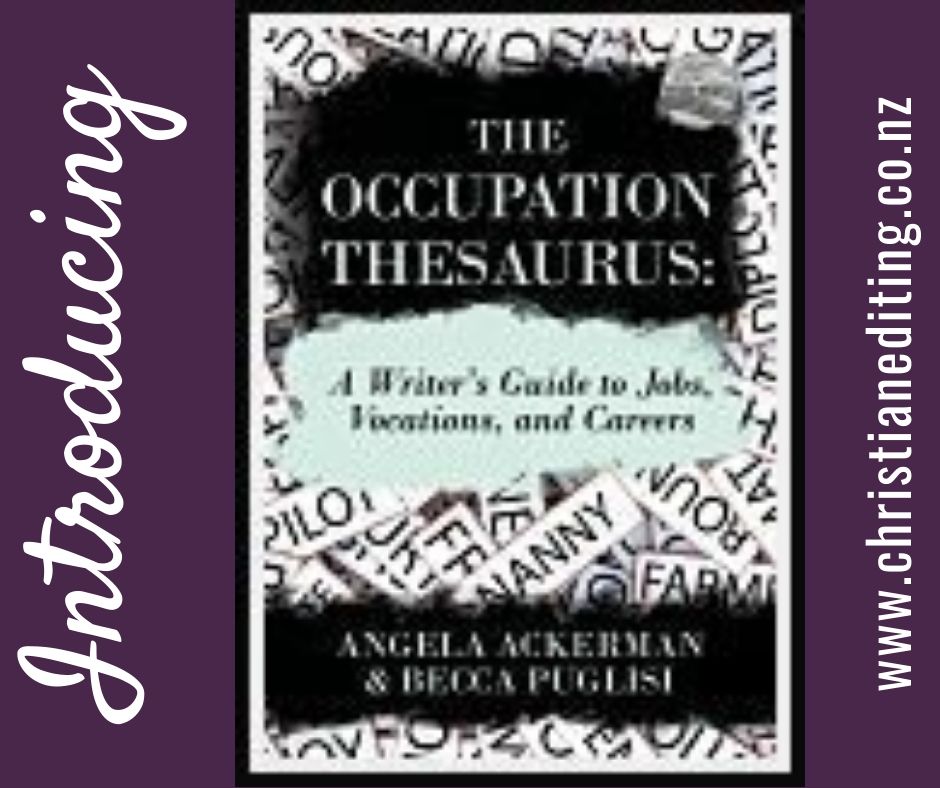Some of you may know Angela Ackerman and Becca Puglisi of Writers Helping Writers. Well, today they are releasing a new book, and I’m part of their street team. I’m handing the blog over to them so they can tell you a bit about their Writer’s Showcase event, new book, and a great freebie to check out. Read on!

Certain details can say a lot about who someone is, like a character’s goals, desires, and backstory wound. But did you know there’s another detail that can tie your character’s arc to the plot, provide intense, multi-layered conflict, AND shorten the “get to know the character” curve for readers?
It’s true. Your character’s occupation is a GOLD MINE of storytelling potential.
How much time do you spend on the job? Does it fulfill you or frustrate you? Can you separate work from home? Is it causing you challenges, creating obstacles, or helping you live your truth?
Just like us, most characters will have a job, and the work they do will impact their life. The ups and downs can serve us well in the story.
Maybe you haven’t thought much about jobs in the past and how they act as a window into your character’s personality, interests, and skills. It’s okay, you aren’t alone. The good news is that The Occupation Thesaurus: A Writer’s Guide to Jobs, Vocations, and Careers is going to do all the heavy lifting for you. You’ll be able to pick the perfect job for them and discover how to weave it into the very fabric of the story. (Here’s one of the jobs profiled in this book: FIREFIGHTER.)
GIVEAWAY ALERT: THE WRITER’S SHOWCASE IS WAITING
To celebrate the release of a new book, Becca and Angela are running a giveaway from July 20th & July 23rd. You can win some great prizes, including gift certificates that can be spent on writing services within the Writer’s Showcase. Stop by to enter if you like!
Resource Alert: A List of Additional Jobs Profiles For Your Characters!

Some of the amazing writers in our community have put together additional career profiles for you, based on jobs they have done in the past. What a great way to get accurate information so you can better describe the roles and responsibilities that go with a specific job, right? To access this list, GO HERE.



